Excerpts from Jim Conrad's
Naturalist Newsletter
Entry from field notes dated September 3, 2023, taken in Los Mármoles National Park in the Eastern Sierra Madre mountains, Hidalgo state, MÉXICO; oak-pine forested mountain peak about 3km west of Puerto de Piedra, on road branched off the road between Trancas {on maps designated "Morelos (Trancas)"} and Nicolás Flores; limestone bedrock; elevation ~2,600m (~8,500); N20.816°, W99.214°
INDIANBUSH
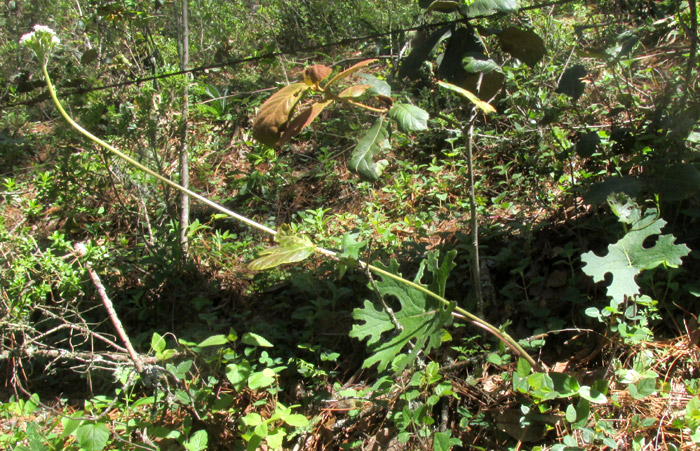
Amid cattle-ravaged undergrowth on a steep slope in oak-pine forest, the above plant caught attention with its long, stiff, leafless stem, seen above crossing the picture diagonally, and the broad, deeply lobed leaves at the plant's base. Atop the stem arose a small cluster of white flowers.

Amid the jumble of flowers, for identification purposes, two features were noteworthy: First, clusters of six or so florets were gathered into heads; second, from each open floret emerged five stamens with brown anthers fused by their margins into slender, cylindrical tubes. These details meant we had a member of the largest of all plant families, the Composite/Aster/Sunflower Family, the Asteraceae, though it was an unusual one.
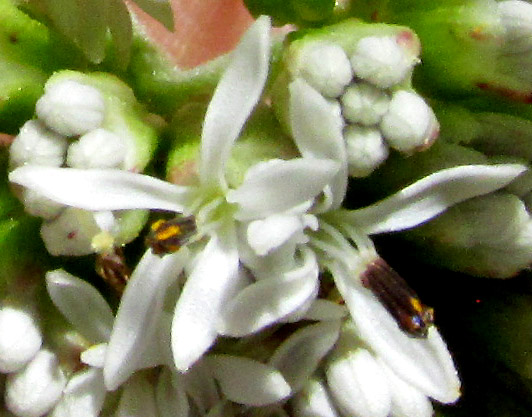
Pictured at the right are two florets, each with what appear to be five white petals. Normally corollas of Aster Family florets are formed either into cylindrical tubes topped by five very short lobes (disc florets), or else they constitute a single flat, tongue-shaped ray (ray florets), or rarely they're bilaterally symmetrical in shape -- but not like five separate petals. Our plant's petal-like items are super-long lobes atop cylindrical disc florets. The flower heads bear only disc florets, despite at first glance the long lobes looking like ray flower corollas. Being clear about the disc-floret/ray-floret situation is critical for identification in this vast family.
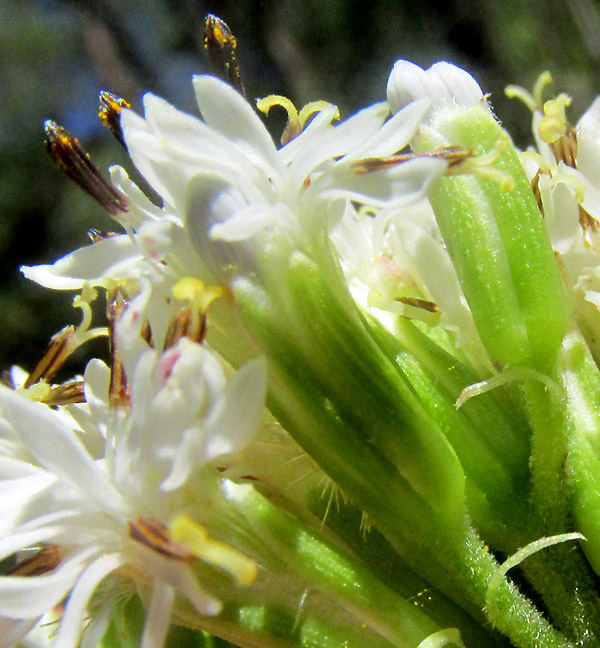
The green involucre surrounding the bases of flowering heads consisted of bracts all of approximately the same height.
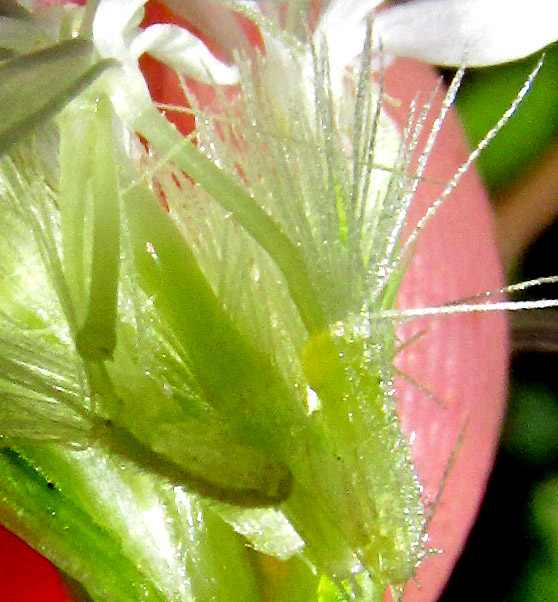
A split open flowering head revealed that each future one-seeded, cypsela-type fruit bore at its top numerous white bristles, the pappus. No scale-like palea separated the immature cypselae from one another.
All the features seen above point us to a member of the genus Psacalium, in the Aster Family Groundsel tribe, the Senecioneae. The more than 50 accepted Psacalium species are all Mexican and Central American except one in the US. In English often the species are referred to as Indianbushes. The 2021 study by José Luis Villaseñor and others entitled "Riqueza y distribución de la flora vascular del estado de Hidalgo, México" lists five Psacalium species documented for our upland central Mexican state of Hidalgo. Of those five species, ours is easy to distinguish because it's the only one whose large, deeply multi-lobed leaves are attached to their petioles not at their blade margins, but within the blade's perimeter, on the blade's undersurface, as seen below:
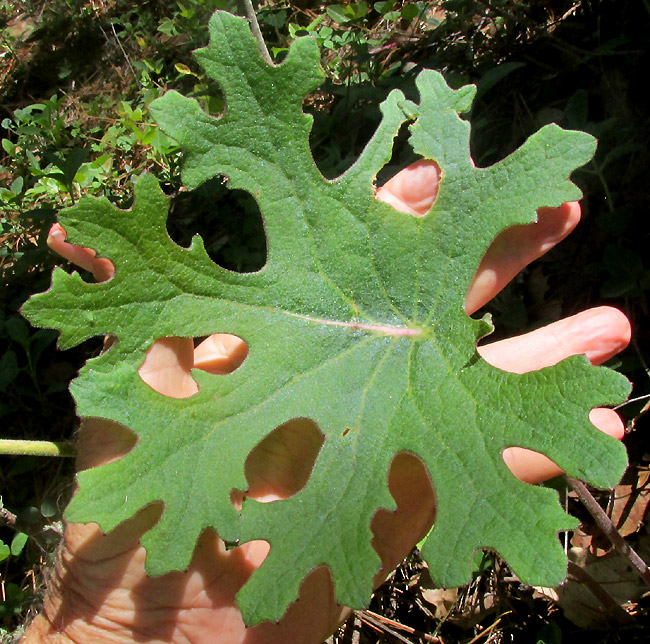
Such leaves are said to be "peltate," which explains our plant's name, PSACALIUM PELTATUM.
Psacalium peltatum is endemic just to Mexico, occurring in various highland environments, especially oak-pine forests, throughout most of Mexico north of the Isthmus of Tehuantepec. It's considered a very variable species, of which three varieties have been recognized; ours is the typical variety peltatum.
In Mexican traditional medicine, Psacalium peltatum is highly regarded as a treatment for diabetes. The 2002 study by Abigail Aguilar Contreras and Santiago Xolalpa Molina entitled "La herbolaria mexicana en el tratamiento de la diabetes" singled out the species as one of three commonly used herbal medicines for diabetes -- the other two being Hintonia latiflora of the Black Nightshade Family, and Cecropia obtusifolia of the Nettle Family. Our plant's roots were used.
Gladys Isabel Manzanero-Medina and others in their 2009 work "Etnobotánica de siete raíces medicinales en el mercado de Sonora de la Ciudad de México" found fresh roots of Psacalium peltatum to be one of the seven most commonly sold medicinal roots in the huge Sonora market of Mexico City. Not only diabetes but arthritic pains were treated with the root. For arthritic pains the roots were mashed and soaked in alcohol for seven days, after which the painful area could be washed with the alcohol. For diabetes, mashed roots were soaked in water, then the water was drunk.
The 2010 study by Francisco Alarcón and others entitled "Anti-inflammatory and antioxidant effects of a hypoglycemic fructan fraction from Psacalium peltatum (HBK) Cass. in streptozotocin-induced diabetes mice" concluded that "Psacalium peltatum roots showed antioxidant and anti-inflammatory properties in mice with streptozotocin-induced diabetes."
The roots are somewhat carrot-shaped, semiwoody, and up to a meter long.